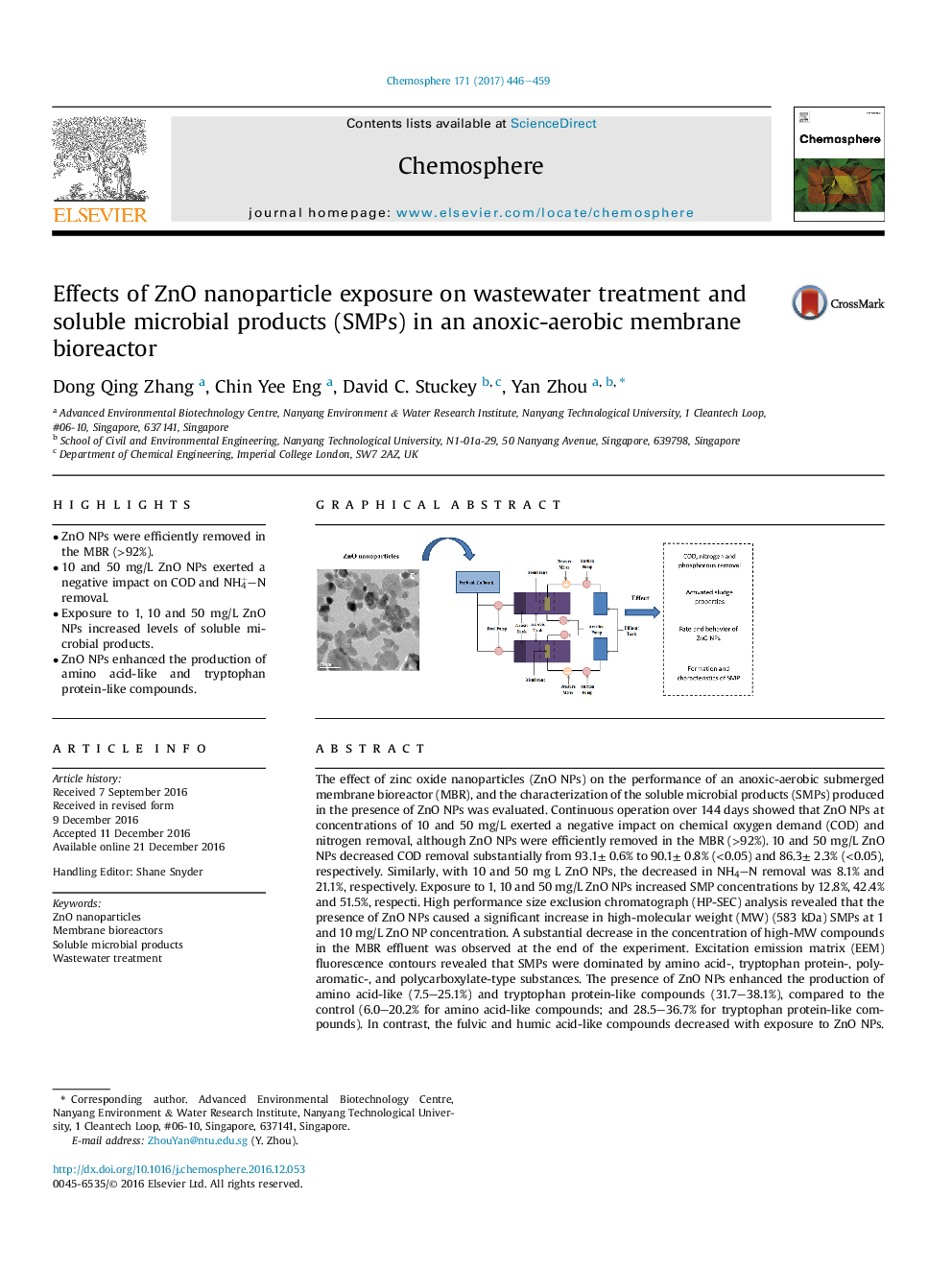| کد مقاله | کد نشریه | سال انتشار | مقاله انگلیسی | نسخه تمام متن |
|---|---|---|---|---|
| 5746393 | 1618800 | 2017 | 14 صفحه PDF | دانلود رایگان |

- ZnO NPs were efficiently removed in the MBR (>92%).
- 10 and 50Â mg/L ZnO NPs exerted a negative impact on COD and NH4+N removal.
- Exposure to 1, 10 and 50Â mg/L ZnO NPs increased levels of soluble microbial products.
- ZnO NPs enhanced the production of amino acid-like and tryptophan protein-like compounds.
The effect of zinc oxide nanoparticles (ZnO NPs) on the performance of an anoxic-aerobic submerged membrane bioreactor (MBR), and the characterization of the soluble microbial products (SMPs) produced in the presence of ZnO NPs was evaluated. Continuous operation over 144 days showed that ZnO NPs at concentrations of 10 and 50 mg/L exerted a negative impact on chemical oxygen demand (COD) and nitrogen removal, although ZnO NPs were efficiently removed in the MBR (>92%). 10 and 50 mg/L ZnO NPs decreased COD removal substantially from 93.1± 0.6% to 90.1± 0.8% (<0.05) and 86.3± 2.3% (<0.05), respectively. Similarly, with 10 and 50 mg L ZnO NPs, the decreased in NH4N removal was 8.1% and 21.1%, respectively. Exposure to 1, 10 and 50 mg/L ZnO NPs increased SMP concentrations by 12.8%, 42.4% and 51.5%, respecti. High performance size exclusion chromatograph (HP-SEC) analysis revealed that the presence of ZnO NPs caused a significant increase in high-molecular weight (MW) (583 kDa) SMPs at 1 and 10 mg/L ZnO NP concentration. A substantial decrease in the concentration of high-MW compounds in the MBR effluent was observed at the end of the experiment. Excitation emission matrix (EEM) fluorescence contours revealed that SMPs were dominated by amino acid-, tryptophan protein-, polyaromatic-, and polycarboxylate-type substances. The presence of ZnO NPs enhanced the production of amino acid-like (7.5-25.1%) and tryptophan protein-like compounds (31.7-38.1%), compared to the control (6.0-20.2% for amino acid-like compounds; and 28.5-36.7% for tryptophan protein-like compounds). In contrast, the fulvic and humic acid-like compounds decreased with exposure to ZnO NPs. This work may help better understanding the effect of nanoparticle exposure on wastewater treatment performance and SMP characteristics.
This study investigated the impacts of ZnO NPs on pollutant removal in a submerged MBR and changes in SMP concentrations, properties and compositions.213
Journal: Chemosphere - Volume 171, March 2017, Pages 446-459